OT Month Spotlights
OT Month Member Spotlights
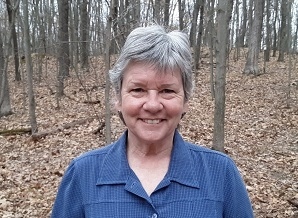 Karen Walker, MA,OTRL is a retired Occupational Therapist. She has been a member of Michigan Occupational Therapy Association since 1980.
Karen Walker, MA,OTRL is a retired Occupational Therapist. She has been a member of Michigan Occupational Therapy Association since 1980.
Karen earned a BS, MA, and OT certification. She received her Bachelor of Science from Central Michigan University. Upon graduation attended University of Pennsylvania to earn a certification in Occupational Therapy. She returned to college to earn her master degree in Educational Leadership from Western Michigan University.
Karen has been employed in a variety of settings throughout her OT career. In 1977 she was a staff therapist at Occupational Therapy Services Inc which provided home health in northwest Ohio. This company was one of the earlier organizations to get third party reimbursement for OT home health. She changed her focus to mental health working at Toledo Hospital and Forest View Psychiatric Hospital as a staff therapist, team leader and team coordinator in acute care psychiatric settings. Karen developed individual and group treatment programs for this population and supervised staff and students. Karen also provided treatment as a staff therapist for developmentally disabled clients in foster home settings at Comprehensive Therapy Center. Karen‘s most recent employment was at Grand Rapids Community College in the Occupational Therapy Assistant program. Her Initial roles were that of a faculty member and fieldwork coordinator for 12 years. She later served as the program director and faculty for 19 years.
Throughout her OT career Karen acted as an advocate for patients, students, faculty and the Occupational Therapy profession. She advocated through education and promotion of mental health, the Occupational Therapy Assistant program and the role of Certified Occupational Therapy Assistants in all areas of OT practice.
Karen served as the Grand Rapids Community College Occupational Therapy Assistant fieldwork coordinator initially in 1986 when a COTA was not part of the OT treatment team in many facilities. She developed sites for the OTA students by helping the facility OT develop OTA role delineation for fieldwork supervision. This provided successful fieldwork experiences resulting in many sites creating a COTA position and hiring their initial student.
Upon retirement Karen volunteers in a variety a setting using her occupational therapy skills. One organization is Ability Weavers which is a company which employs individuals with and without disabilities to produce woven products. Volunteering provides meaning and purpose to her as all activities should do. MiOTA membership is important as the organization advocates for the Occupational Therapy profession. We need to support the association efforts to represent our profession and professionals.
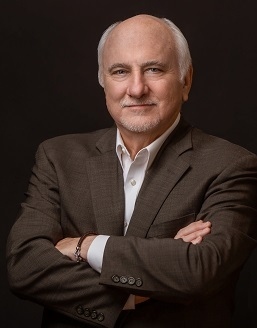 Ben Atchison, PhD, OTRL, FMOTA, FAOTA, Professor and Chair Emeritus, Western Michigan University
Ben Atchison, PhD, OTRL, FMOTA, FAOTA, Professor and Chair Emeritus, Western Michigan University
1. When did you join MiOTA?
I joined as a student in the Fall of 1972 and have been a member ever since
2. Where did you go to College?
I completed my BSOT at Western Michigan University, M.Ed. from Georgia State University (Counseling and Psychological Services) and a PhD at Wayne State University in Instructional Design & Technology)
3. Where have you worked?
I have had great opportunities over four decades to work in a variety of settings. I began my career as an army occupational therapist at Ft Benning Georgia from 1975-1977, followed by a faculty appointment in the Department of Occupational Therapy at Eastern Michigan University between 1978 and 1980, where I taught for two years and decided I needed to return to practice full time to further develop my clinical knowledge and skills. For the next 6 years, I worked part-time in home health care while working full time in the school system, outpatient rehabilitation and director of rehabilitation services at a home care agency-all in Flint, Michigan. In 1986, I returned to EMU to once again teach full time and continued working in home care part time to keep my clinical skills current. In 1999, I joined the Department of Occupational Therapy at Western Michigan University where I co-founded the WMU SW Michigan Children‘s Trauma Assessment Center and served as chair from 2012 to 2017 at which time I retired. I continue to volunteer as Managing Editor of the Open Journal of Occupational Therapy, Co-Director of the Sammons Center for Innovation and Research in Occupation Based Technology and as a member of the Advisory Board for the OTD Program at the University of Michigan-Flint, my hometown.
4. What is the BIGGEST Highlight of your career?
Being named to the 2021 AOTA Award of Merit, because three colleagues made the effort to nominate me in recognition of my career accomplishments and a national committee of my peers selected me. It is the most humbling experience of my career but certainly one that brings deep gratitude.
5. Why do you think it is important to be a MiOTA Member?
To ensure that occupational therapy is well represented in legislative agendas that ensure access to our services that can only occur by way of financial support from membership fees as well as providing opportunities to share information among our membership through annual conferences, ongoing webinars, monthly bulletins and other venues for communication and continuing professional development.
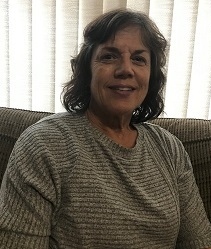 Kathy Michaels
Kathy Michaels
1. When did you join MiOTA?
I joined MiOTA in 1977 when I graduated from college.
2. Where did you go to College?
I went to college at Western Michigan University. At that time I just selected OT on my college application and was accepted into the OT program as a freshman.
3. Where have you worked?
I worked at Mary Free Bed Rehabilitation (Grand Rapids) for 1 year, Children's Hospital of Michigan (Detroit) for 9 years, Royal Oak Schools for 28 years, and The Therapy SPOT (Farmington Hills) for 3 years.
4. What is the BIGGEST Highlight of your career?
Biggest highlight would be working with children most of my career. It was rewarding to help children improve their skill levels, watch their excitement as they mastered skills, and see their self-esteem improve.
5. Why do you think it is important to be a MiOTA Member?
It is important to be a member of MiOTA to support our profession. Licensure was a big issue in the past and without MiOTA to fight for licensure, I am not sure it would have happened. Not sure what issues will arise in the future, but our profession needs a state organization as well as a national organization to protect and support Occupational Therapy.
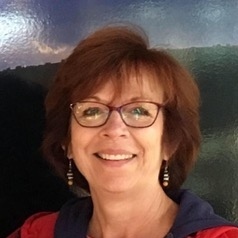 Margo Beauregard, MS, OTRL, CCM
Margo Beauregard, MS, OTRL, CCM
1. When did you join MiOTA? I became a member of MOTA not long after graduation in the late 1970‘s. I was also a member of affiliate chapters Northern Metropolitan Occupational Therapy Association and Detroit Occupational Therapy Association. I was President of NMOTA 1979 – 81, on the MOTA Board as Chairperson of the Council on Membership 1980-83, and Chairperson of the Developmental Disabilities section of the Council on Practice 1986-89.
2. Where did you go to College? I graduated with a BS in Occupational Therapy from Eastern Michigan University and, 20 years later, an MS in Occupational Therapy from Wayne State University.
The majority of my career focused on people with developmental disabilities. Fresh out of college, I was employed at Oakdale Regional Center (large residential facility), followed by Macomb Oakland Regional Center (community-based DD program) where I became Director of Therapy Services for 18 years. I spent the next 15 years employed by the Detroit Public Schools. In 2010, I retired from the school district and established a private practice Potentials Consulting, LLC. I re-invented myself and became a certified Medical Case Manager for catastrophically injured people and later specialized in home accessibility evaluations as an OT. I officially retired in 2019.
4. What is the BIGGEST Highlight of your career? I must give you two. One was being part of a group of brilliant and dedicated folks in a social movement dedicated to moving people with developmental disabilities from institutions to full citizenship in their community. Second, was finally having the guts to start my own company and excel in areas that fit my interests, personality and independent spirit. Thanks Jill!
5. Why do you think it is important to be a MiOTA Member? I‘ve always seen importance in supporting our profession in whatever way I could, particularly within our state. My involvement changed with life circumstances from taking on multiple leadership roles, to involvement in legal and clinical issues affecting OT practice in Michigan, to providing financial support and sharing knowledge. How else can you remain aware of current issues in OT that ultimately affect your life and the quality of care for your clients?
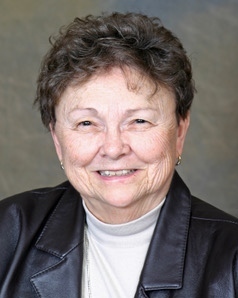 Dr. Barbara Hemphill
Dr. Barbara Hemphill
1. When did you join MiOTA? I joined MiOTA when I came to Kalamazoo in 1981.
2. Where did you go to College? My undergrad is from the University of Iowa and my Master is from Colorado State University.
3. Where have you worked? I started teaching at Cleveland State University and retired from Western Michigan University as associate professor emeritus.
4. What is the BIGGEST Highlight of your career? I was awarded the fellow of OT and awarded the most influential one hundred OT in the last one hundred years.
5. Why do you think it is important to be a MiOTA Member? The opportunity to serve OT at the state level, the opportunity to network, and the continuing education opportunities.
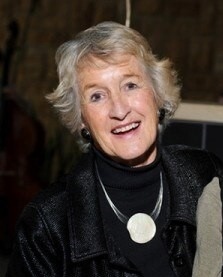 Dr. Barbara Rider
Dr. Barbara Rider
When did you join MiOTA?
I joined MiOTA in 1976 when I moved from Kansas to Michigan to be Chair of OT at WMU.
Where did you go to College?
BS in Occupational Therapy. University of Wisconsin, Madison. 1954 (We graduated first, then did field work we called Field Work, Affiliations.
MS in Special Education. University of Kansas, Lawrence. 1973
PhD in Educational Administration. University of Michigan, Ann Arbor 1987
Where have you worked?
When I finished field work (1 month GMS, 3 month psych; 3 months -physical disabilities, 3- Pediatrics, 2 months Tuberculosis), I went to Japan to join my husband. 2 weeks by ship . Korean War. My psych affiliation was at Camarillo State Hospital in California. It was just before Thorazine, so I saw mental health BEFORE the psychotropic drugs.
Pediatrics was Children‘s Hospital, San Francisco. The polio epidemic was still raging. We treated kids in Iron lungs. We made splints from plastic, cutting them out with a coping saw, shaping with a bunson burner; usually they cracked and had to be re-made.
Phys Dis was many post-polio adults, teens. We worked on dressing and other ADL and IADL skills. Crafts.
When we returned from Japan, I worked at Madison General Hospital. When I got pregnant, I had to quit. The message to women in the 1950‘s was: The boys need the jobs. They had sacrificed their lives for us. Girls should marry, have 3.4 children, and if you worked, your children would be delinquent.
Several years later, it became necessary for me to go to work. We had 3 children, the baby wasn‘t quite 1 year old. I was so unsure of myself that I didn‘t apply for the OT job that was available. ( I couldn‘t remember how to end the lacing on a wallet!) so I applied for a job at Penny‘s. They didn‘t hire me so I applied for the OT job at the VA hospital and was hired. Luckily, I had good Aides. OT was groups of 30+ chronic schizophrenics, all men. We did a lot of woodworking, small chairs, doll houses and other children‘s furniture and toys which we delivered to local pre-schools. It was wonderful to see the smiles on the men‘s faces when a child ran up to show him her new toy. There were incidents. I remember one day, the Aids and most patients had left, but Mr Jones was behind, a stream of cuss words, his usual conversation. He had had double lobotomies. Mr. Love was just leaving also and emerged from his usual Hallucinations and went after Mr. Jones with a hammer. I told Mr. Love firmly, to Put down the hammer and he did. Thank God.
The Topeka VA was associated with the Menninger Foundation, the Mayo Clinic of Mental Health. I had the opportunity to meet Margaret Mead, Elizabeth Kubler Ross, Anna Freud and others. It was the mid -to-late 1960s , the time of LSD and Timothy Leary. LSD was outlawed, but the VA got special permission for an experimental alcoholic treatment program using LSD. Part of my role in the program was to have each patient paint a picture (of anything) before his experience and another painting immediately after. The psychiatrists used the paintings in individual therapy. I regret that I didn‘t know anything about research: the paintings would have been a rich source of data. I also had the opportunity to develop and implement a research study with Lorna Jean King. The research design used person drawings.
I left the VA to direct the OT Program at the Capper Foundation for Crippled Children in Topeka. Rood, Fiorentino and Jean Ayres were just emerging in the literature. I was a skeptic so I devised a research study. Rood won Brushing, icing, tapping over the muscle belly did increase muscle strength. I wrote it up and sent it to AJOT. It came backRED. Months later I got letter from AJOT editor asking me to re-submit, It was published. I was asked to chair the AOTA Publication Committee, which I did. We presented the first Writers Workshop at AOTA Annual Conference.
At Cappers, I worked with a teacher to develop activities based on Ayres‘ theories and I started graduate school in Special Education at the University of Kansas (KU). I also taught a course at KU.
I returned to the VA briefly as Chief OT, but left to teach full time in the Occupational Therapy Program at KU.
KU had a fine OT Program. We admitted on a first-come basis, except one time when Bob Dole‘s daughter applied to an already full class. (Bob Dole was a popular Kansas Senator. He ran for President and sponsored the Americans with Disabilities Act. The ADA) You bet, we admitted Robin Dole. .Sometimes rules have to be broken.
I learned one of my most important life lessons at KU, and so did my students. I taught the crafts class. 36 students. I knew how to knit, but I didn‘t know how to crochet and I had to teach both. I arranged for three women patients from the VA who knew how to crochet to come over to KU and teach the students. Remember, these were the days of big institutions and locked wards. These ladies demonstrated some rather unusual behaviors, but they were fine as long as they could dash across the hall to get a cup of coffee and smoke a cigarette. All the students learned to crochet. And so did I. But most importantly, we all learned that you can learn from anybody., everybody.
At KU, we noticed that a large number of students dropped out after two years. They had nothing, so we built a COTA Program. I tried to do the same years later at WMU, but I was unsuccessful. You can imagine how pleased I am that WMU is now implementing a CODA Program.
I moved to Michigan in 1976 to Chair the Occupational Therapy Program at WMU. I had had Western Fieldwork students at the VA, and they were the best. I started summer of 1976, The College of Health and Human Services was formed that summer, and the WMU Faculty Union was formed. The Union decided to strike the first day of classes. Only one OT faculty member went on strike.
Over the years, we hired faculty with strong research and publication records Each masters; graduate was required to develop and execute a research study. Many publications were generated. Many faculty were co-authors of their students‘ research publications and WMU – OT Program became known as a strong research program.
The faculty and students were creative and energetic. We developed a Return to Work Program for occupational therapists who had dropped out of practice, usually to marry and have children. The program focused on skills they needed to update their practice to return to OT. It was taught through Continuing Education to reach a broad population. AOTA eventually took it over.
OT students did accessibility assessments of businesses and services in Kalamazoo, organized the data into books which were available free at Rest Stops and at the Chamber of Commerce. We even developed a publication, Research That Never Got Published. It didn‘t fly.
After 10 years, I stepped down as Chair. I remained on faculty for several years. During the years I had been Chair, I had become involved in several community causes and organizations related to Health Care. I was elected to two terms on the Kalamazoo County Board of Commissioners and one appointed term. I served 20 years as member and chair of Kalamazoo County Department of Social Services Board.
I retired from WMU in 1991. Fred and I wanted to travel more.
But you can‘t get OT out of your soul.
I worked with an attorney. I performed work capacity evaluations.
I was part owner with three OT‘s of a rehabilitation business (PT and OT) in Grand Rapids from the 1980‘s through mid-1990‘s.
I worked (very part time) with a small group of OT‘s to provide OT Services to Developmentally Disabled persons in group homes, their homes, and at a Day Treatment Program, until I was 85 years old.
BIGGEST Highlight in my career.
I‘ve mentioned many, but I remember the moment when I suddenly realized I had value. It was at the VA. I don‘t remember the reason, but I realized that the other staff nurses, doctors, others, valued what I did as an occupational therapist. From that moment on, I‘ve had confidence OT did that for me.
Value of MiOTA
I had belonged to Kansas OT Association and AOTA, so the move to MiOTA was logical. I believe it is a professional responsibility to belong to and support one‘s professional organization.
When I joined MiOTA, it was MOTA. There was no paid staff. We were a totally volunteer organization. In those early years, I was elected vice president. It was the job of the VP to put on the annual conference. We planned a Beach Resort Conference, complete with bonfire and hot dogs and smores on the beach. We stayed in cabins. As you can imagine, some folks liked it and some DIDN‘T. It was a stretch from the usual. Membership in MiOTA opened me to new colleagues and many opportunities. I was selected by AOTA to write the first official statement about the role of Wellness in OT. MiOTA is still a very important part of my life and I‘m 89 years old!
